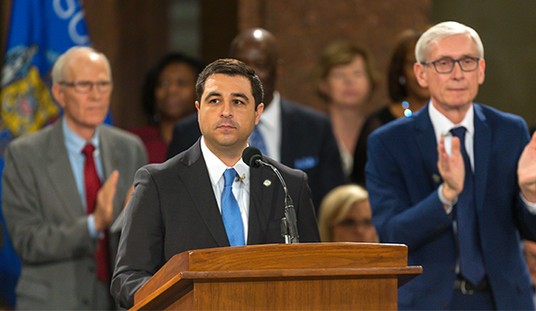Much of the attention for House Resolution 660, passed by House Democrats on Halloween, has failed to note the significant differences with resolutions authorizing previous presidential impeachments.
Two writers on the Lawfare blog, for example, claimed that H.R. 660 incorporates “a structure similar to what was in place for the Clinton and Nixon impeachment proceedings.” Simply placing the resolutions side-by-side shows this is false.
First, the previous resolutions authorized those impeachment inquiries at the outset; this one simply says “carry on” to committees that began investigating weeks ago.
Second, the previous resolutions authorized only the Judiciary Committee to investigate whether impeachment grounds exist. On September 24, 2019, House Speaker Nancy Pelosi unilaterally told six different committees to investigate without any rules or procedures.
Third, H.R. 660 sets procedures for public hearings in only two of the six investigating committees. The others are named in the resolution but told simply to “continue their ongoing investigations as part of the existing House of Representatives inquiry.” This apparently means that the other four committees can continue operating in secret, using procedures they make up as they go along.
Fourth, H.R.660 creates a structure for subpoena authority in the Intelligence and Judiciary committees very different from what was in place for the Clinton and Nixon impeachments.
On October 8, 1998, the House adopted House Resolution 581, granting subpoena authority to “the chairman and ranking member acting jointly.” If “either declines to act,” the other may act alone after bringing the matter to the committee to decide “whether such authority shall be so exercised.” House Resolution 803, adopted on February 6, 1974, included the same provision for the Nixon impeachment.
Recommended
The structure for subpoena authority in House Resolution 660, however, is the opposite. It is not directed at both the majority and minority; in fact it does not use the word “jointly” at all. Instead, the ranking minority member must have “the concurrence of the chair” to exercise subpoena authority, but not vice versa. If “the chair declines to concur,” the ranking minority member must bring the matter to the committee for decision. In other words, the chairman can act unilaterally, while the minority always needs the majority’s permission.
Fifth, H.R. 581 explicitly said that, after committee approval, the ranking minority member can exercise subpoena authority “acting alone.” H.R. 660 deletes any mention of the ranking minority member actually exercising subpoena power, saying only that he or she may refer the matter to the committee.
As if this significant departure from past impeachment procedures were not enough, there are even more radical developments brewing in individual committees. While H.R. 660 presents the Intelligence Committee as taking the lead, the Judiciary Committee has made its own move. Chairman Jerry Nadler (D-NY) has released the committee’s own impeachment hearing procedures “pursuant to House Resolution 660.”
These procedures appear to allow Trump’s counsel to attend and participate in any Judiciary Committee hearings. But there’s an enormous caveat. Section F states that Chairman Nadler can impose “appropriate remedies” if the president “unlawfully” refuses to make witnesses available or to produce requested documents for any of the six investigating committees. These remedies include “denying specific requests by the President or his counsel under these procedures to call or question witnesses.”
Remember that four of the six investigating committees can continue operating in secret, under whatever rules or procedures they choose. That investigative scheme, in fact, can be entirely different for each of those committees. Nadler claims the ability to determine when the president has acted “unlawfully” in relation to committees over which he has no authority. And, when he does (based on whatever standards or criteria he alone chooses), Nadler says he can bar the president – the impeachment defendant – from participating at all in the Judiciary Committee’s hearings.
Thankfully, the Constitution’s impeachment provisions have not been used often in American history. But we do know how to conduct a presidential impeachment that is genuinely fair, legitimate, and that minimizes partisanship. House Democrats have chosen to reject the example, counsel, and guidance of that experience and opted instead for a glaringly partisan, unbalanced, and novel process.

























Join the conversation as a VIP Member